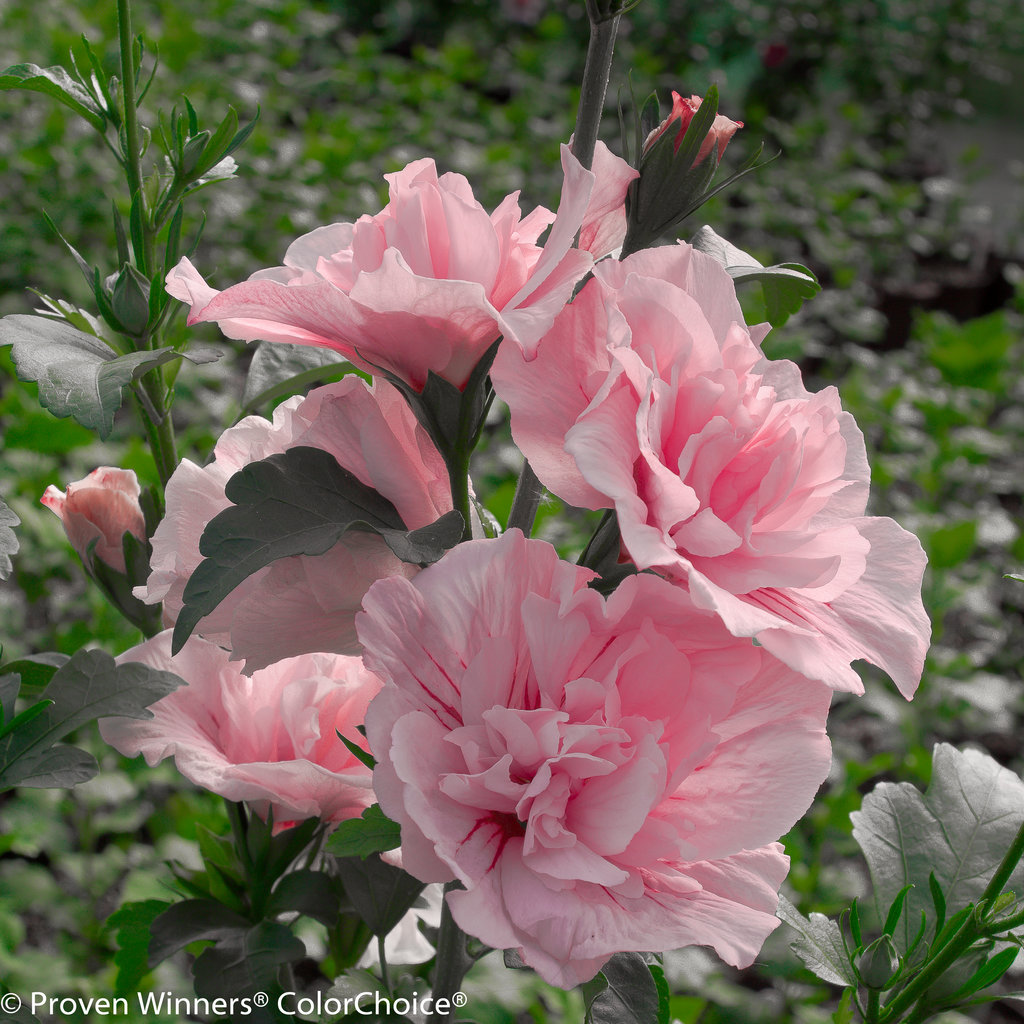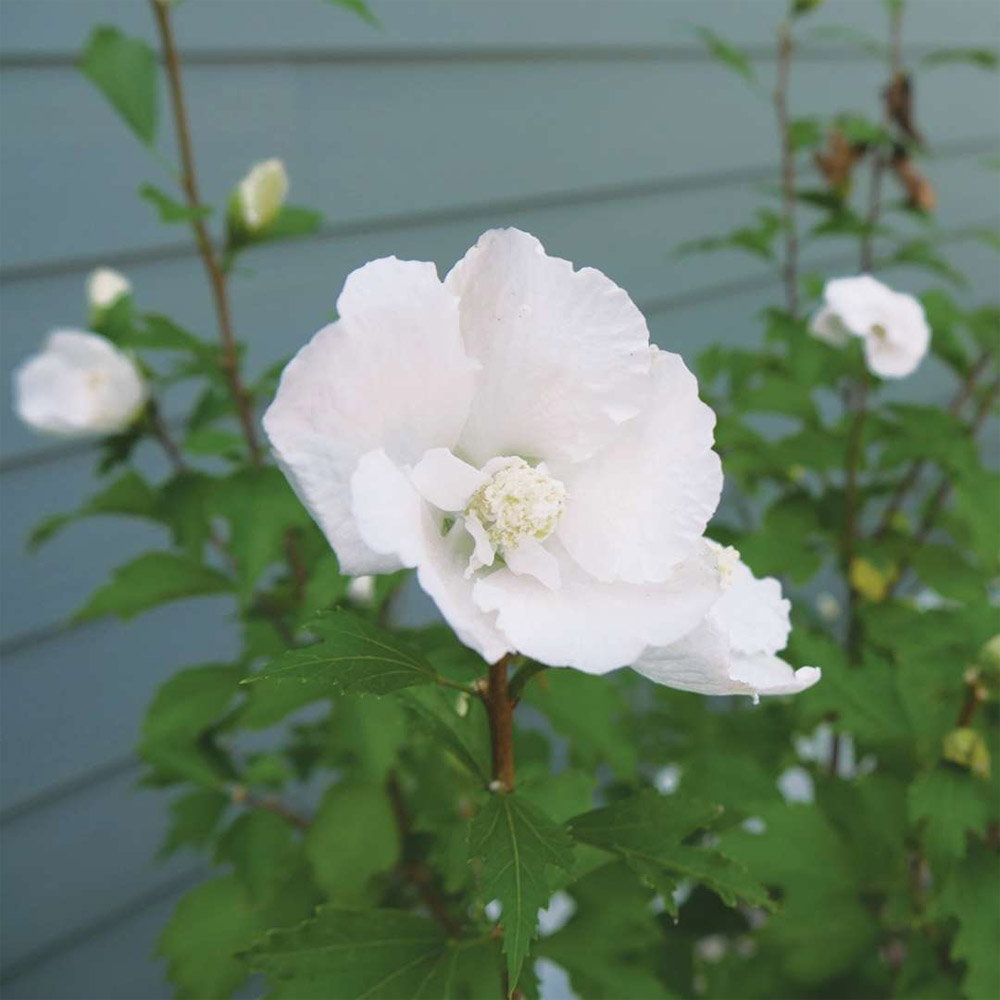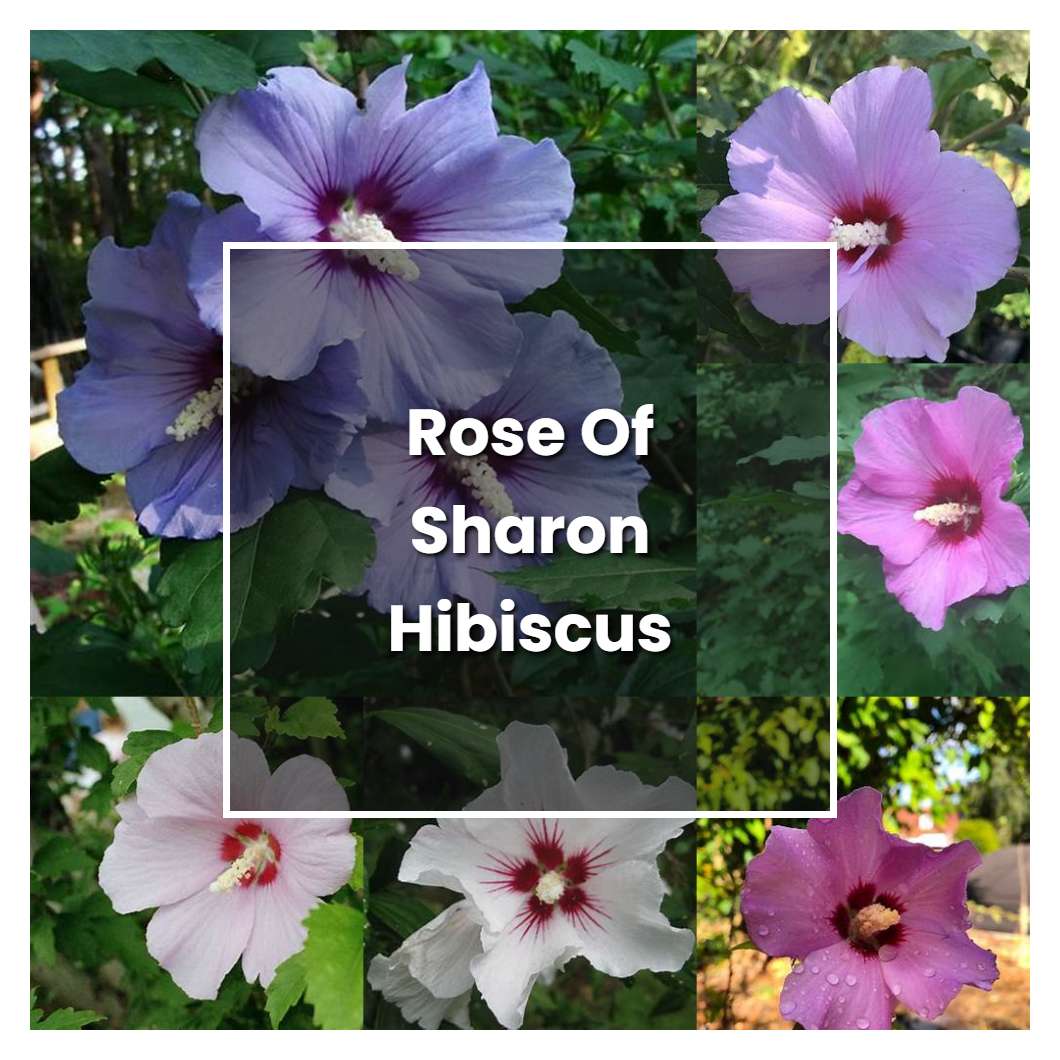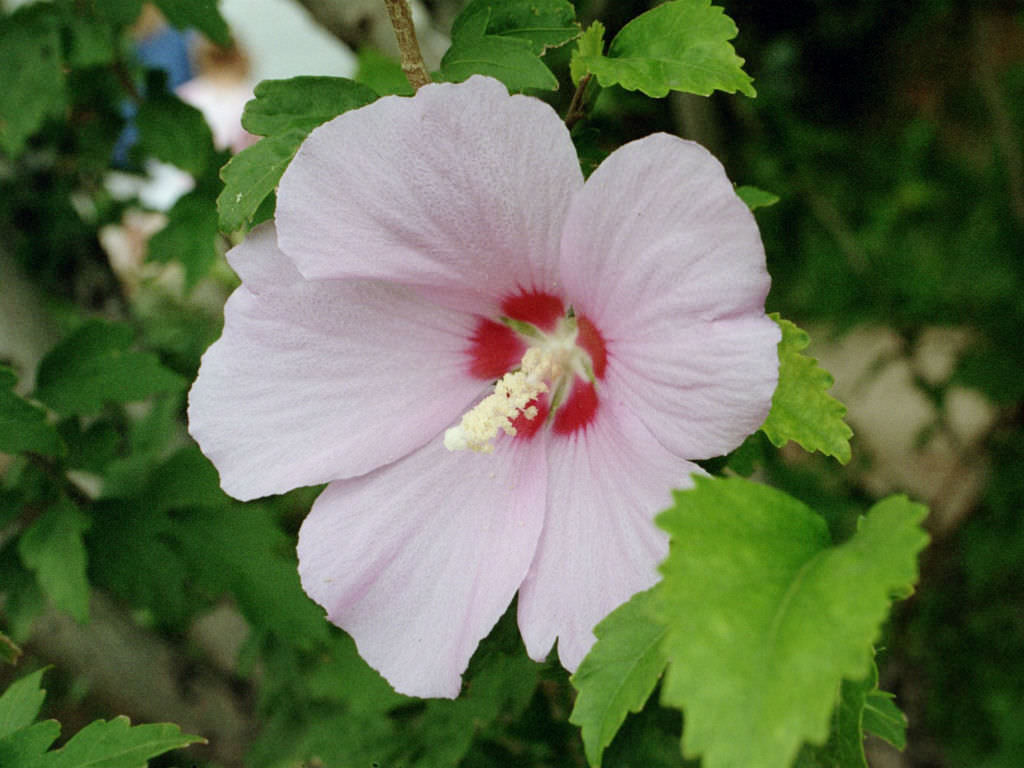What is the Difference Between Hibiscus and Rose of Sharon?
Hibiscus and rose of sharon are two popular tropical flowers that are often confused with one another due to their similar appearance. However, these plants belong to different genera and have distinct characteristics. Hibiscus plants are part of the Hibiscus genus, which comprises over 200 species, while rose of sharon belongs to the Hibiscus syriacus species.
One of the main differences between hibiscus and rose of sharon is their growth habit. Hibiscus plants are typically larger and more sprawling, with some species growing up to 15 feet tall. In contrast, rose of sharon is a compact shrub that grows to be around 8-12 feet tall. Additionally, hibiscus plants have larger, more showy flowers that can reach up to 12 inches in diameter, while rose of sharon has smaller, more delicate blooms.
Another key difference between hibiscus and rose of sharon is their hardiness zone. Hibiscus plants are generally more sensitive to cold temperatures and thrive in USDA hardiness zones 9-11. Rose of sharon, on the other hand, is more tolerant of cooler temperatures and can grow in USDA hardiness zones 5-9. This makes rose of sharon a more versatile option for gardeners in cooler climates.
Despite their differences, both hibiscus and rose of sharon are popular ornamental plants that add beauty and charm to any garden or indoor space. With proper care and attention, these plants can thrive and provide stunning blooms for months to come.
How to Grow Hibiscus and Rose of Sharon in Your Garden
Growing hibiscus and rose of sharon in your garden can be a rewarding experience, but it requires proper care and attention. To ensure optimal blooming, it’s essential to provide these plants with the right conditions. Hibiscus and rose of sharon prefer well-draining soil that is rich in organic matter. A mix of compost, peat moss, and perlite can provide the necessary nutrients and drainage for healthy growth.
In terms of sunlight, hibiscus and rose of sharon require full sun to partial shade. Hibiscus plants can tolerate more direct sunlight, while rose of sharon prefers some shade, especially in warmer climates. Watering schedules also vary between the two plants. Hibiscus plants require consistent moisture, especially during the blooming season, while rose of sharon is more drought-tolerant and requires less frequent watering.
Another crucial aspect of growing hibiscus and rose of sharon is fertilization. Both plants benefit from regular fertilization, especially during the growing season. A balanced fertilizer with a ratio of 10-10-10 (nitrogen-phosphorus-potassium) can provide the necessary nutrients for healthy growth and blooming.
Pruning is also essential for maintaining the shape and promoting healthy growth of hibiscus and rose of sharon. Hibiscus plants require regular pruning to encourage new growth and prevent legginess, while rose of sharon requires pruning in the late winter or early spring to promote new growth and blooming.
By following these tips and providing the right conditions, you can enjoy the beautiful blooms of hibiscus and rose of sharon in your garden. With proper care and attention, these plants can thrive and provide stunning displays of color and beauty for months to come.
The Meaning and Symbolism Behind Hibiscus and Rose of Sharon
Hibiscus and rose of sharon have been imbued with rich cultural and symbolic meanings across various traditions and civilizations. In Hawaiian culture, the hibiscus is considered a symbol of love, beauty, and spirituality. It is often used in leis and other traditional ceremonies to represent the connection between the physical and spiritual worlds.
In contrast, the rose of sharon has been associated with love, fertility, and abundance in many ancient cultures. In biblical tradition, the rose of sharon is mentioned in the Song of Solomon as a symbol of love and beauty. In modern times, the rose of sharon has become a popular motif in wedding ceremonies and other celebrations of love and commitment.
Both hibiscus and rose of sharon have also been used in traditional medicine and spiritual practices for their perceived healing properties. In Ayurvedic medicine, the hibiscus is believed to have anti-inflammatory and antioxidant properties, while the rose of sharon is used to treat a range of ailments, from digestive issues to skin problems.
In addition to their medicinal properties, hibiscus and rose of sharon have also been used in various spiritual practices to promote relaxation, reduce stress, and enhance spiritual connection. In many cultures, the flowers are believed to possess sacred energy that can be used to heal and balance the body, mind, and spirit.
Overall, the meanings and symbolism behind hibiscus and rose of sharon are complex and multifaceted, reflecting the diverse cultural and spiritual traditions in which they have been used. Whether used in traditional ceremonies, medicinal practices, or simply as a symbol of love and beauty, these flowers continue to captivate and inspire people around the world.
Hibiscus vs Rose of Sharon: Which is Easier to Care For?
When it comes to choosing between hibiscus and rose of sharon, one of the key considerations is ease of care. Both plants are relatively low-maintenance, but they do have some differences in terms of pruning needs, pest resistance, and disease susceptibility. In this section, we’ll compare the ease of care for hibiscus and rose of sharon, and provide guidance on how to troubleshoot common issues with each plant.
Hibiscus plants are generally more sensitive to pruning and require more frequent pruning to maintain their shape and promote blooming. They also tend to be more susceptible to pests like aphids, whiteflies, and spider mites. However, hibiscus plants are relatively resistant to diseases, and can thrive in a variety of soil types and conditions.
Rose of sharon, on the other hand, is a more forgiving plant when it comes to pruning. It can tolerate some neglect and requires less frequent pruning to maintain its shape. Rose of sharon is also more resistant to pests, but can be susceptible to diseases like powdery mildew and leaf spot. However, it is relatively easy to treat these diseases with fungicides and good garden hygiene.
In terms of watering, both plants prefer well-draining soil and full sun to partial shade. However, hibiscus plants tend to require more frequent watering, especially when they’re producing blooms. Rose of sharon, on the other hand, is more drought-tolerant and can survive with less frequent watering.
Overall, rose of sharon is generally considered easier to care for than hibiscus. However, with proper care and attention, both plants can thrive and provide beautiful blooms for months to come. By understanding the unique needs and challenges of each plant, you can provide the best possible care and enjoy their beauty for years to come.
Some common issues to watch out for when growing hibiscus and rose of sharon include:
- Pests: Aphids, whiteflies, spider mites, and scale can all be problematic for hibiscus and rose of sharon. Use neem oil or insecticidal soap to treat infestations.
- Diseases: Powdery mildew, leaf spot, and root rot can all affect hibiscus and rose of sharon. Use fungicides and good garden hygiene to prevent and treat diseases.
- Nutrient deficiencies: Hibiscus and rose of sharon require regular fertilization to promote healthy growth and blooming. Use a balanced fertilizer and follow the manufacturer’s instructions.
By being aware of these potential issues and taking steps to prevent them, you can enjoy the beauty of hibiscus and rose of sharon in your garden for years to come.
Using Hibiscus and Rose of Sharon in Landscaping and Garden Design
Hibiscus and rose of sharon are two versatile flowers that can add a touch of tropical beauty to any garden or landscape. Whether you’re looking to create a stunning hedge, a vibrant border, or a striking specimen plant, these flowers are sure to impress. In this section, we’ll explore the many ways to use hibiscus and rose of sharon in landscaping and garden design, and provide inspiration for incorporating these flowers into your outdoor space.
One of the most popular ways to use hibiscus and rose of sharon is as a hedge or screen. Both plants can grow quite tall, with some varieties reaching heights of over 10 feet. This makes them ideal for creating a natural barrier or dividing wall in your garden. Simply plant multiple hibiscus or rose of sharon plants close together, and trim them regularly to maintain a uniform shape.
Hibiscus and rose of sharon also make excellent border plants. Their large, showy flowers add a pop of color and texture to any garden bed, and their compact growth habit makes them easy to fit into small spaces. Try planting a row of hibiscus or rose of sharon along a garden path, or use them to create a beautiful border around a patio or deck.
For a more dramatic effect, consider using hibiscus or rose of sharon as a specimen plant. These flowers are sure to be a focal point in any garden, and their large, showy blooms make them a great choice for a statement piece. Simply plant a single hibiscus or rose of sharon plant in a prominent location, and surround it with complementary plants and flowers.
In addition to their ornamental value, hibiscus and rose of sharon also have a number of practical uses in landscaping and garden design. For example, they can be used to attract pollinators like bees and butterflies, or to provide shade and shelter for birds and other wildlife. They can also be used to create a natural windbreak or to stabilize soil on slopes and embankments.
Some popular landscaping ideas that feature hibiscus and rose of sharon include:
- Tropical gardens: Combine hibiscus and rose of sharon with other tropical plants like palms, bird of paradise, and heliconia to create a lush, exotic garden.
- Butterfly gardens: Plant hibiscus and rose of sharon alongside other nectar-rich flowers like lantana, zinnia, and marigold to attract butterflies and other pollinators.
- Coastal gardens: Use hibiscus and rose of sharon to create a natural windbreak or to stabilize soil on slopes and embankments in coastal gardens.
- Container gardens: Plant hibiscus and rose of sharon in large containers or planters to add a touch of tropical beauty to patios, decks, and balconies.
By incorporating hibiscus and rose of sharon into your landscaping and garden design, you can add a touch of tropical beauty and elegance to your outdoor space. Whether you’re looking to create a stunning hedge, a vibrant border, or a striking specimen plant, these flowers are sure to impress.
Health Benefits of Hibiscus and Rose of Sharon
Hibiscus and rose of sharon are not only beautiful flowers, but they also have a number of potential health benefits. For centuries, these plants have been used in traditional medicine, herbal teas, and skincare products. In this section, we’ll explore the scientific evidence supporting the medicinal properties of hibiscus and rose of sharon, and discuss some of the ways they can be used to promote health and wellness.
Hibiscus flowers have been shown to have a number of potential health benefits, including lowering blood pressure, reducing inflammation, and supporting liver health. The flowers contain a number of bioactive compounds, including anthocyanins, flavonoids, and phenolic acids, which have been shown to have antioxidant and anti-inflammatory effects.
Rose of sharon, on the other hand, has been traditionally used to treat a number of health conditions, including fever, rheumatism, and digestive problems. The plant contains a number of bioactive compounds, including flavonoids, phenolic acids, and terpenoids, which have been shown to have anti-inflammatory, antioxidant, and antimicrobial effects.
Both hibiscus and rose of sharon have been used in herbal teas, which are said to have a number of health benefits. Hibiscus tea, for example, is said to help lower blood pressure, reduce inflammation, and support liver health. Rose of sharon tea, on the other hand, is said to help treat fever, rheumatism, and digestive problems.
In addition to their use in herbal teas, hibiscus and rose of sharon have also been used in skincare products. The flowers contain a number of bioactive compounds that are said to have antioxidant and anti-inflammatory effects, which can help to protect the skin from damage and promote healthy aging.
Some of the potential health benefits of hibiscus and rose of sharon include:
- Lowering blood pressure: Hibiscus flowers have been shown to help lower blood pressure in people with hypertension.
- Reducing inflammation: Both hibiscus and rose of sharon have anti-inflammatory effects, which can help to reduce inflammation and promote healing.
- Supporting liver health: Hibiscus flowers have been shown to support liver health and reduce the risk of liver disease.
- Treating fever and rheumatism: Rose of sharon has been traditionally used to treat fever and rheumatism, and has anti-inflammatory and antioxidant effects.
- Promoting healthy skin: The bioactive compounds in hibiscus and rose of sharon have antioxidant and anti-inflammatory effects, which can help to protect the skin from damage and promote healthy aging.
While the potential health benefits of hibiscus and rose of sharon are promising, it’s essential to note that more research is needed to fully understand their effects on human health. As with any herbal remedy, it’s also important to consult with a healthcare professional before using hibiscus or rose of sharon for medicinal purposes.
Cooking and Crafting with Hibiscus and Rose of Sharon
Hibiscus and rose of sharon are not only beautiful flowers, but they also have a number of practical uses in cooking and crafting. In this section, we’ll explore some of the creative ways to use these flowers, including recipes, DIY projects, and floral arrangements.
Hibiscus flowers are a popular ingredient in many tropical and Caribbean recipes. They can be used to make a variety of dishes, including teas, sorbets, and salads. One popular recipe is hibiscus tea, which is made by steeping the flowers in hot water and then sweetening the tea with sugar or honey. Hibiscus tea is said to have a number of health benefits, including lowering blood pressure and reducing inflammation.
Rose of sharon flowers can also be used in cooking, although they are not as widely used as hibiscus. They can be used to make a variety of dishes, including salads, soups, and sauces. One popular recipe is rose of sharon jelly, which is made by cooking the flowers with sugar and pectin to create a sweet and tangy jelly.
In addition to their use in cooking, hibiscus and rose of sharon flowers can also be used in crafting and DIY projects. They can be used to make a variety of items, including floral arrangements, wreaths, and potpourri. One popular project is to dry the flowers and use them to make a beautiful and fragrant potpourri.
Some creative ways to use hibiscus and rose of sharon in cooking and crafting include:
- Hibiscus tea: Steep the flowers in hot water and then sweeten the tea with sugar or honey.
- Rose of sharon jelly: Cook the flowers with sugar and pectin to create a sweet and tangy jelly.
- Floral arrangements: Use the flowers to create beautiful and fragrant arrangements for your home or as a gift.
- Wreaths: Use the flowers to make a beautiful and fragrant wreath for your home or as a gift.
- Potpourri: Dry the flowers and use them to make a beautiful and fragrant potpourri.
Some popular recipes that use hibiscus and rose of sharon include:
- Hibiscus sorbet: Steep the flowers in hot water and then mix with sugar and lemon juice to create a sweet and tangy sorbet.
- Rose of sharon salad: Use the flowers to make a beautiful and fragrant salad with mixed greens, fruit, and nuts.
- Hibiscus and rose of sharon tea: Steep the flowers in hot water and then mix with sugar and lemon juice to create a sweet and tangy tea.
Overall, hibiscus and rose of sharon are versatile flowers that can be used in a variety of creative ways in cooking and crafting. Whether you’re looking to make a delicious tea or a beautiful floral arrangement, these flowers are sure to inspire you.
Conclusion: Why Hibiscus and Rose of Sharon are a Must-Have in Your Garden
In conclusion, hibiscus and rose of sharon are two tropical flowers that bring unparalleled beauty and charm to any garden or indoor space. With their stunning appearance, versatility in landscaping, and rich cultural symbolism, it’s no wonder why these flowers have been cherished for centuries. By understanding the unique characteristics, growth habits, and care requirements of hibiscus and rose of sharon, gardeners can unlock their full potential and enjoy their breathtaking blooms for years to come.
Whether you’re a seasoned gardener or a beginner, incorporating hibiscus and rose of sharon into your garden or indoor space can add a touch of elegance and sophistication. Their ability to thrive in a variety of environments and their relatively low maintenance requirements make them an ideal choice for gardeners of all levels. Plus, their potential health benefits, culinary uses, and creative applications make them a valuable addition to any garden or home.
As you consider adding hibiscus and rose of sharon to your garden or indoor space, remember to appreciate their unique qualities and characteristics. From their vibrant colors and delicate petals to their rich history and cultural significance, these flowers are truly a treasure to behold. By embracing the beauty and charm of hibiscus and rose of sharon, you can create a stunning and thriving garden that brings joy and serenity to your life.
So why not give hibiscus and rose of sharon a try? With their incredible beauty, versatility, and potential benefits, they’re sure to become a favorite in your garden or indoor space. Whether you’re looking to add a pop of color, create a stunning floral arrangement, or simply enjoy the beauty of nature, hibiscus and rose of sharon are the perfect choice. Start exploring the wonderful world of these tropical flowers today and discover the magic they can bring to your life!








